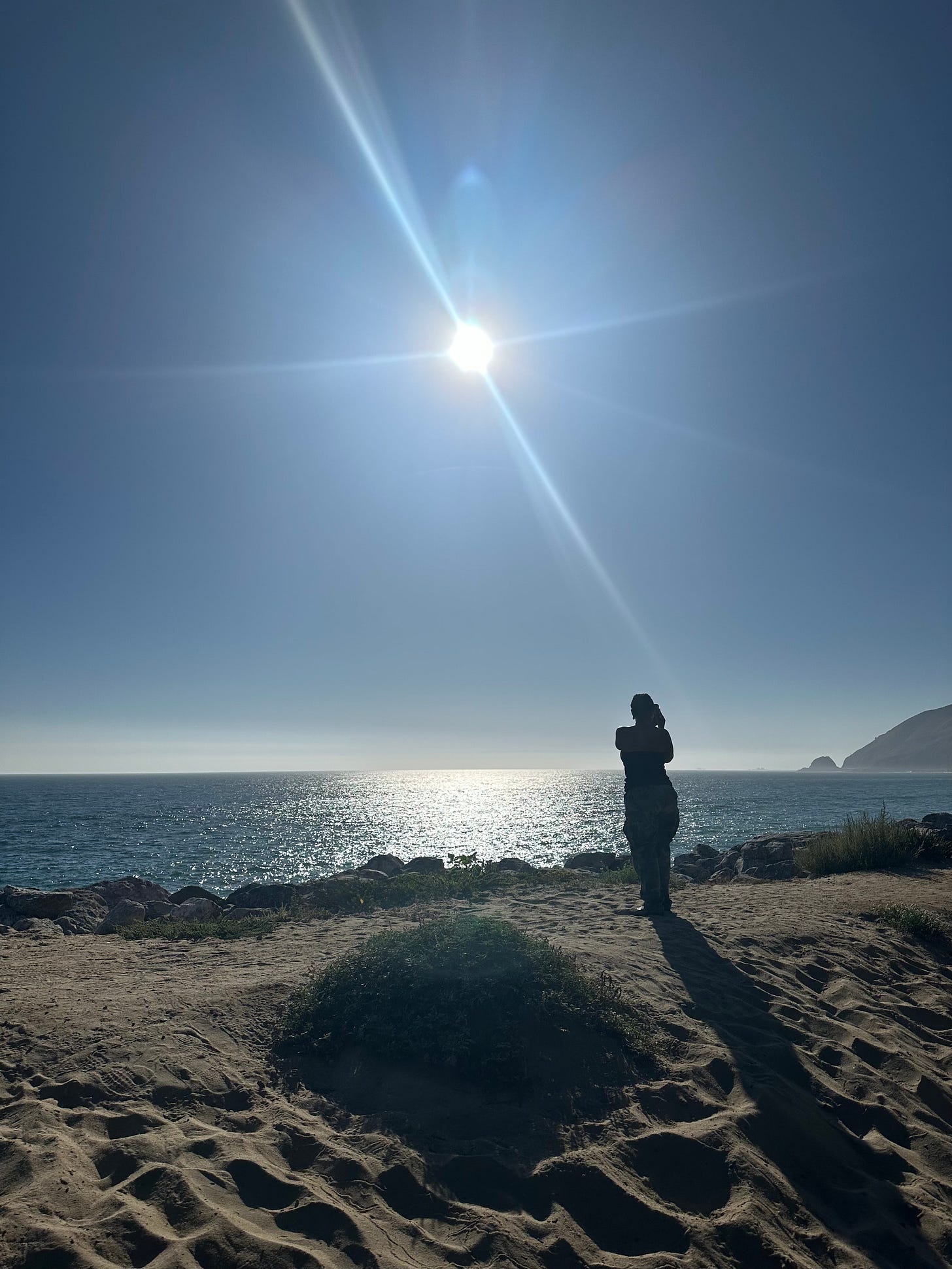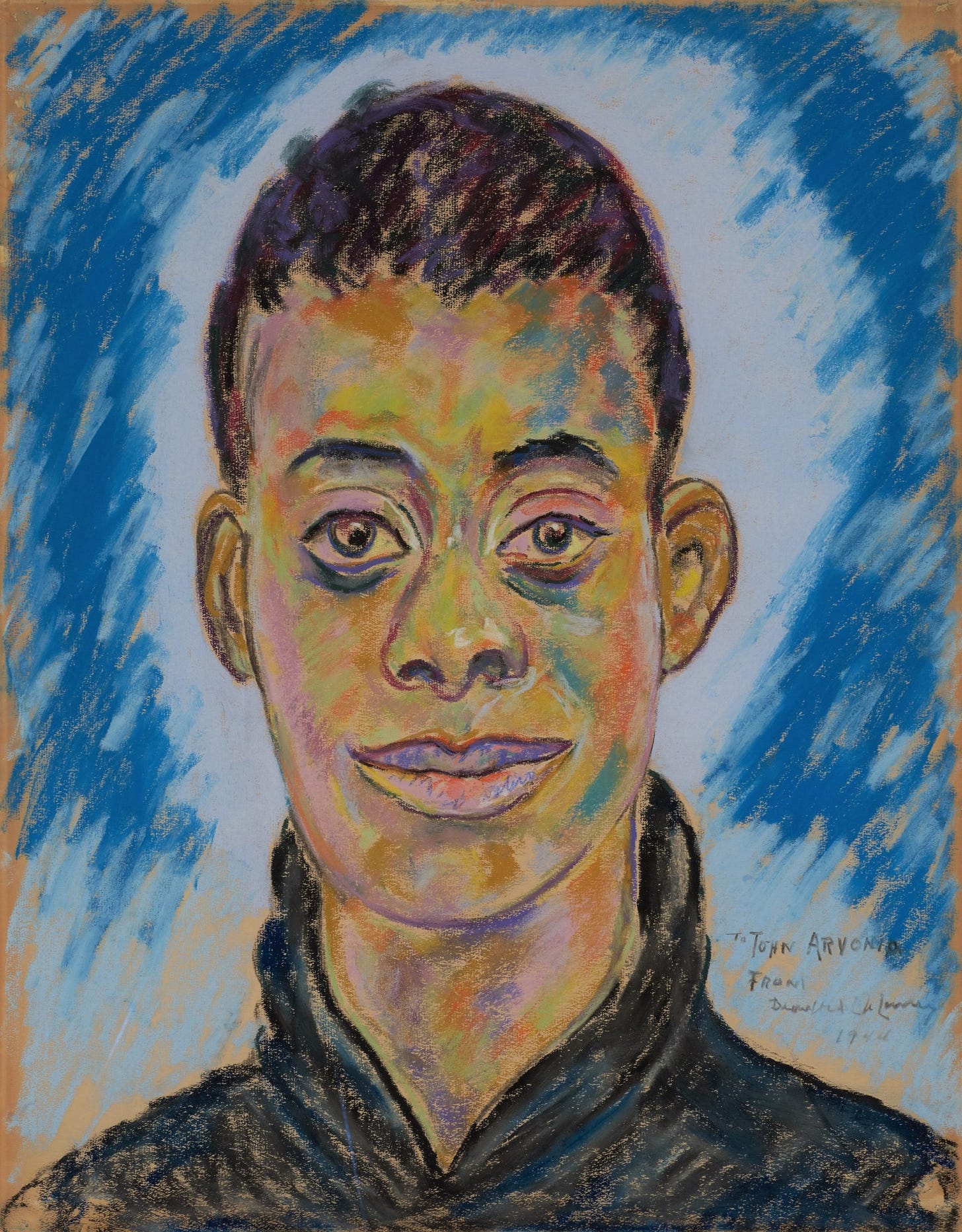The Simple Act of Looking Again
A lost phone, found clarity, and the spiritual art of seeing what we missed the first time.
“I think I lost my phone,” my sister-friend Ifeoma said as we drove down the PCH. “It’s gone.”
We were returning from a glorious day trip to Ojai, and refused to accept this bitter ending.
I pulled over immediately and we searched the car. Under the seats, in the back, in the door pockets, side crevices, no phone to be found. Then we started retracing our steps, through stories I’d been sharing along the way and a picture she took of me at our first stop. We used each as a compass to find our way back.
On the beach, we split up and scanned the sand. Still nothing. We tried driving along the shoulder, 20 feet in it ended and once again nothing. “It’s okay,” she said. “I’ll use Find my iPhone when I get home.”
As we merged back into the busier part of the highway, I kept my eyes peeled, driving slowly as cars rushed past us. Just as we were about to pull off, I glanced to the right, no shoulder, no margin, and there it was. Her phone.
Lying on the edge of the highway as if someone had gently placed it there. No cracks. No scratches. No visible damage. Whole. She’d left it on the top of the car and at some point it flew off.
We screamed. “LOOK AGAIN!”
I think about that moment often and the phrase has stuck with me ever since. Not just for lost phones, but for lost parts of myself.
To some, it’s just a story about a lost personal item, but I see it as a spiritual metaphor. A reminder that sometimes we must look again, at former dreams, past versions of ourselves, old stories we’ve believed. Not to go back, but to extract the wisdom we missed the first time. To find the miracle in our mess, the lessons in our detours.
We live in a culture obsessed with what’s next. But in our haste, we often miss what’s already here and what’s already been. Observation, when practiced with care, becomes its own kind of spiritual art. A holy form of noticing.
As I sat with this idea of looking again, things I’ve consumed over the last six months began to surface like seeds breaking open.
One came from an essay on the artist Beauford Delaney and his lifelong bond with James Baldwin. In 1965, Baldwin recalled a moment when the two were walking through Greenwich Village “in poverty and uncertainty.” Delaney pointed to an oil-slicked puddle and said, “Look.” Then, “Look again.” As the colors shifted and shimmered, Baldwin saw something deeper, beauty in the overlooked. Meaning in the mess. It was a lesson that would reshape his work forever.
“He taught me how to see, and how to trust what I saw,” Baldwin said years later. “Painters have often taught writers how to see. And once you’ve had that experience, you see differently.”
We owe much of Baldwin’s vision to Delaney. And if Delaney were here he would remind us all to look again.
Then, there’s my mother who’s currently enrolled in a Harvard class called Tangible Things: Discovering History Through Artworks, Artifacts, Scientific Specimens, and the Stuff Around You. The course invites students to reconsider how objects shape memory, identity, and knowledge. How stopping to really look can reframe our understanding of history.
For her final project, she chose a quilt from the early 1900’s, sewn by her grandmother, my great-grandmother.
“Although the quilt I have now is frayed in places and faded from years of use, it still carries the weight of all those warm memories and the love my grandmother stitched into it. This tangible object means so much more to me than just fabric and thread. It represents a time, a place, and a person who shaped my early life.”
What was once just a functional object is now an heirloom, a living artifact. This second look became a tangible reminder that the past doesn’t disappear, it lives in what we choose to preserve.
Even Steve Jobs, in his now-famous Stanford commencement speech, said, “You can’t connect the dots looking forward. You can only connect them looking backward.”
Looking again is not about nostalgia, it’s about alignment. It’s about revisiting what was, to better understand what is, and to walk more faithfully into what could be.
Now let me be clear, for any Bible scholars thinking, “Well, when Lot’s wife looked back, she turned into salt.” Yes. She did. But I don’t believe she was simply observing. She was turning around to reclaim a life already stripped of grace. She was returning not reflecting.
There’s a difference between looking back and going back. One is reflective. The other, regressive.
Looking again is about revelation. It’s about letting memory show us what we couldn’t see in the moment. It’s asking: What did I miss? What do I know now that I didn’t then? What needs to be honored, healed, or released?
I’ve learned that sometimes we don’t need a new life, we need new eyes. That when we trace our story with care, we begin to see how past prayers, relationships and even failures were never wasted. They take on new meaning. Not as mistakes, but as markers.
There’s a quiet power in looking again. At the version of ourselves we thought was lost. At the seasons we assumed were wasted. At the survival we once saw only as silence.
This act is not meant to pull us backward, but an attempt to understand how we got here, how we’ve grown, and what we’re meant to carry forward.
As always, I pray this blesses who it’s for.
With love and intention,
Jennifer
References from this story
The Artist Who Taught James Baldwin to Write Like a Painter, HYPERALLERGIC
On the Painter Beauford Delaney, Transition





Thank you for reading!!!